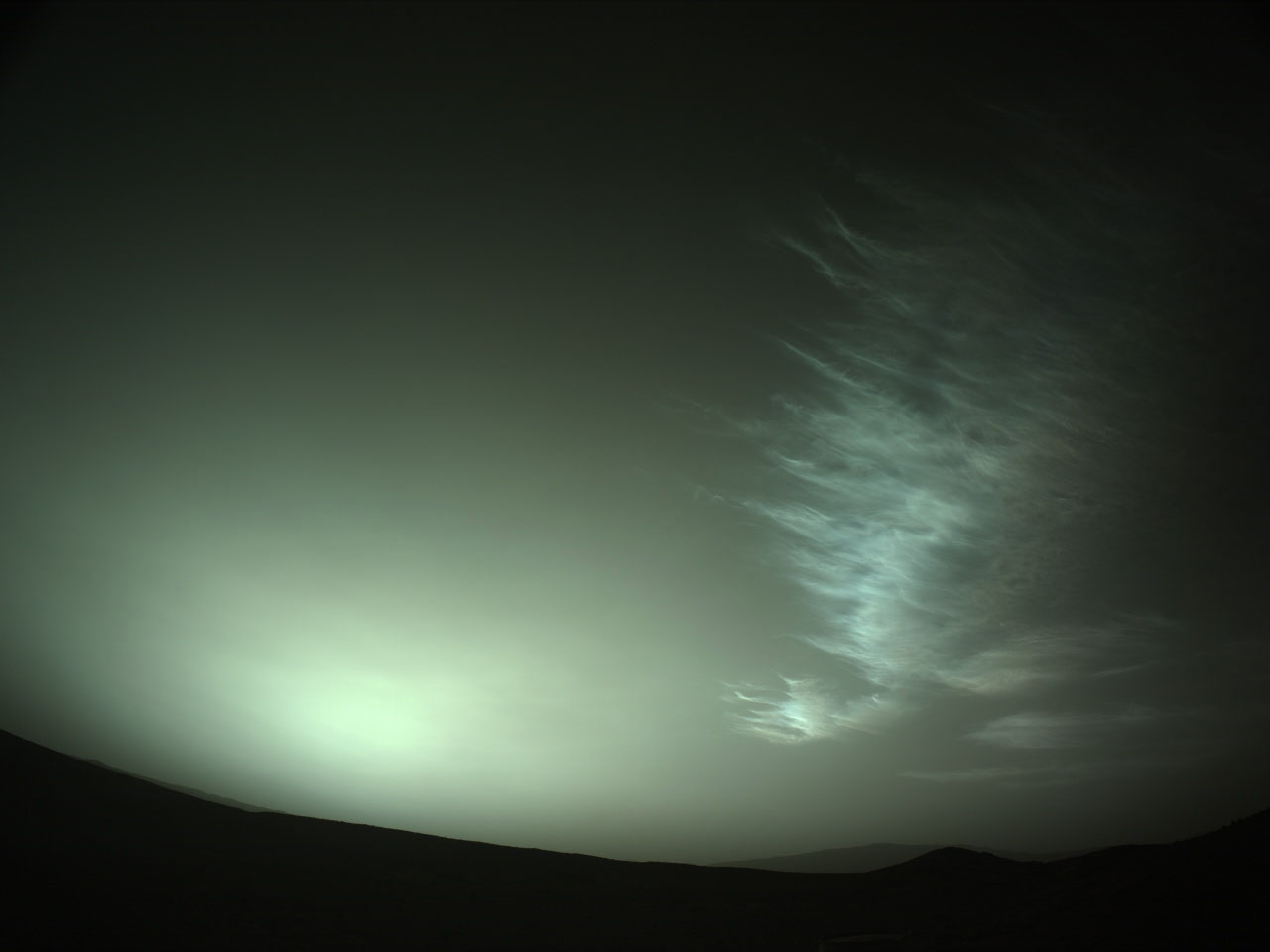Beautiful and Rare High-Altitude Clouds Captured Shimmering over Mars

The Mars Perseverance Rover has captured images of rare, high-altitude noctilucent clouds shimmering over the Red Planet.
The thin atmosphere of Mars makes the appearance of clouds very unusual, though they can form around the planet’s equator in the coldest time of the year.
Perseverance captured the clouds on Saturday (March 18.) To even see these very high-up clouds the sun has to have set while the noctilucent clouds are still in sunlight.
![]()
“These twilight clouds, also known as ‘noctilucent’ (Latin for “night-shining”) clouds, grow brighter as they fill with crystals, then darken after the Sun’s position in the sky drops below their altitude. This is just one useful clue scientists use to determine how high they are,” explains NASA.
These are high-altitude, noctilucent clouds, moving through the sky this morning.
On Mars. pic.twitter.com/nf3MKbx1ou
— Paul Byrne (@ThePlanetaryGuy) March 19, 2023
Planetary scientist Paul Byrne of Washington University shared a short timelapse of the eight images that Persererance captured of the clouds at a local time of 05:20.
“These are high-altitude, noctilucent clouds, moving through the sky this morning. On Mars,” he writes.
Meanwhile, Stuart Atkinson shared a side-by-side comparison of the noctilucent clouds on Earth to underline the two planets’ similarities.
Noctilucent clouds on two worlds… pic.twitter.com/MLpocOVmAT
— Stuart Atkinson (@mars_stu) March 19, 2023
It’s not the first time a Martian probe has captured the uncommon clouds. In 2021, PetaPixel reported on the Mars Curiosity Rover capturing the twinkling clouds.
Thanks to the images, the scientists were able to ascertain that the clouds formed at higher altitudes than is typical, a new discovery
“The clouds Curiosity has imaged are at a higher altitude, where it’s very cold, indicating that they are likely made of frozen carbon dioxide, or dry ice,” NASA said at the time.
Last year, terrestrial photographer Göran Strand captured a rare photo of noctilucent clouds and the northern lights together in one frame.
Even on Earth, Noctilucent clouds are considered to be extremely rare. They are usually only visible in the northern hemisphere.
According to the Met Office, they become visible about the same time as the brightest stars and are usually bluish or silvery in color.
Image credits: NASA/JPL-Caltech